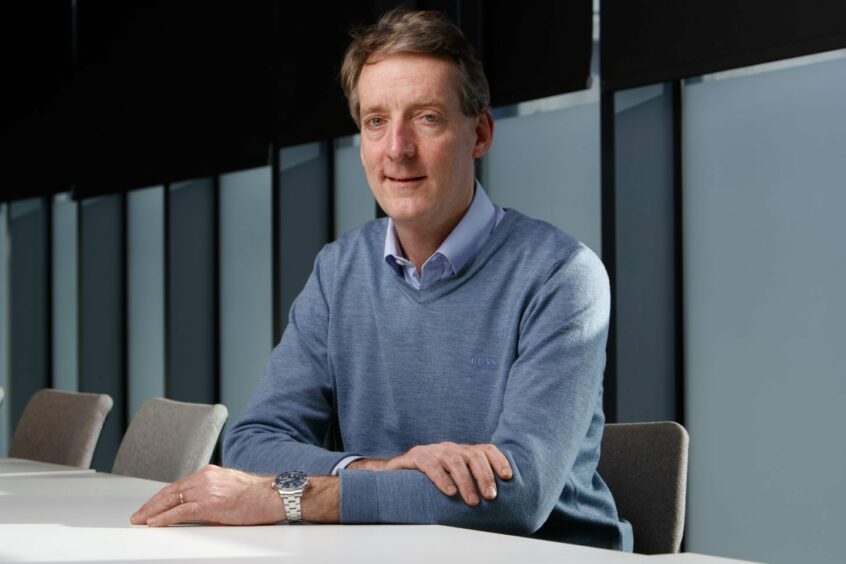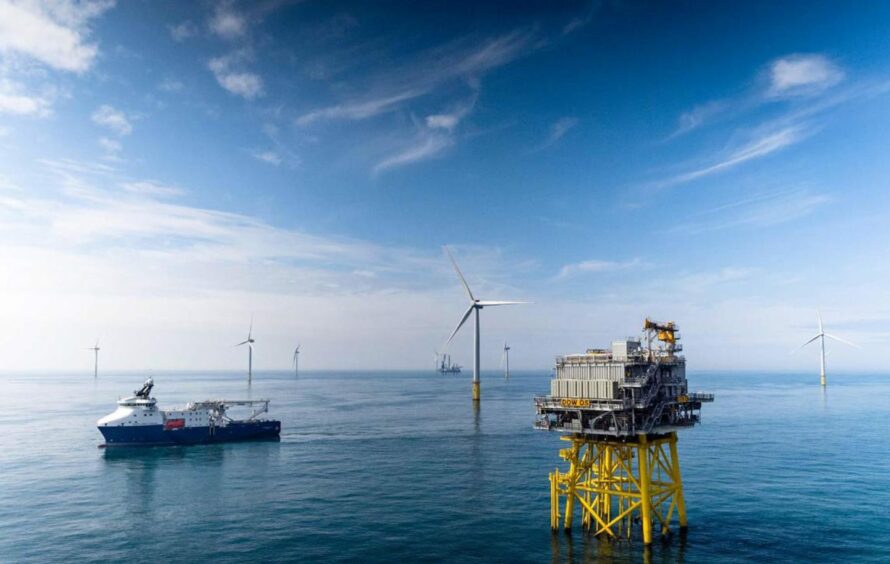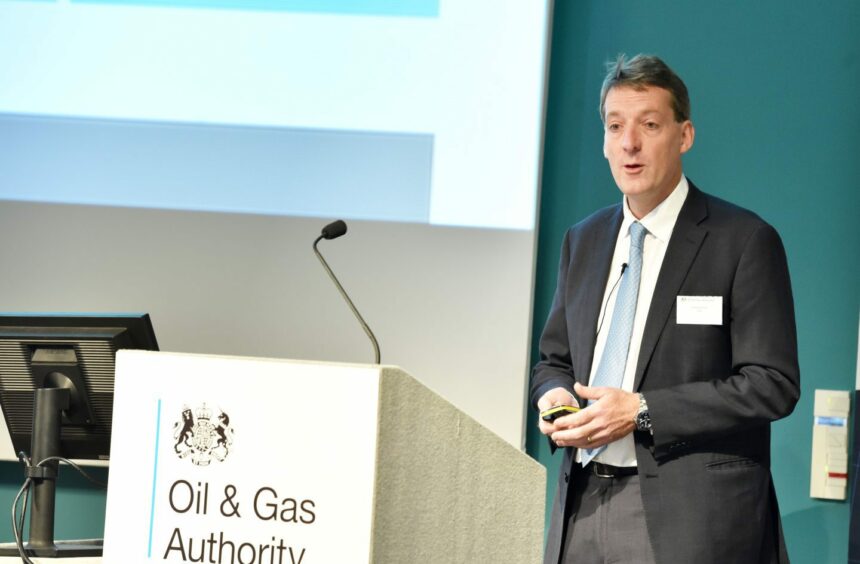
More than five years ago and always over coffee, (outgoing) CEO of the former Oil & Gas Authority (now North Sea Transition Authority), Andy Samuel and I enjoyed a number of informal exchanges about the future potential role of the UK Continental Shelf in the Great Energy Transition.
We particularly discussed the role of offshore wind and its possible value to the oil & gas industry for providing cheap power to existing fields to help extend production and to bring on new resources, with emphasis on the Southern Gas Basin where Big Wind and Big Oil were already rubbing shoulder, not always harmoniously.
Reality is that this dialogue began less than two years after the OGA was launched by the UK Government in 2015, its core remit being to secure the maximum value of economically recoverable petroleum from the UKCS.
Under the leadership of Andy Samuel, this powerful regulator was what the UK’s offshore oil & gas industry needed, though, inevitably, the authority didn’t always get things right.
What is especially interesting is that a systematic back conversation was relatively rapidly established with Big Wind and, given my own involvement with the Aberdeen Bay project, Samuel was keen to share his thoughts.
Sooner or later the two industries would have to come together in some way and, where appropriate, develop symbiotic relationships and harmonise working practices to the common good.
Moving into mainstream
A measure of the value of that early work is surely the announcement in February this year of the Innovation and Targeted Oil and Gas (INTOG) offshore wind leasing process proposed by Crown Estate Scotland.
“We made a small start when we looked at the gas-to-wire opportunity in the Southern North Sea in 2018,” says Samuel.
“That proved more interesting than we initially thought, so the decision was made to look at this more broadly. That was the energy integration work of which there were multiple phases.
“The first phase was led by the OGA; it was about visioning. Quite a few people thought it was perhaps interesting but no more than that.
“It certainly wasn’t mainstream. But today is absolutely is. The change over just two or three years has been quite extraordinary.”
One of the outcomes was the report, ‘UKCS Energy Integration: Interim Findings,’ published on 17 December 2019.
It discussed the first phase of the UK Continental Shelf (UKCS) Energy Integration project led by the OGA. Its aim was to consider options to help feed into a new strategic vision of the UKCS as an integrated energy basin.
Andy Samuel admits that the oil & gas – wind conversation was initially difficult. It boiled down to: ‘We’re Big Wind and we’re the future; you might be Big Oil and but you’re history. How come you have the temerity to come and talk with us.’.
“Rolling forward, with my board, once a year we would have a stakeholder day,” he recalls.
“You can imagine that, in the early days, it was very much E&P focused and we’d take the board to places like Sullom Voe and talk about gas terminals and stuff like that.
“But our last stakeholder board was in London where we had key people like Duncan Clark, UK head at Orsted and senior people from Ofgem; plus some UKCS MDs and investors including lending banks.
“So it was quite different. And electrification of offshore installations and security of supply were important parts of the discussion.
“We basically have all the components needed to make the future North Sea vision a reality. However, it’s one thing having a vision; you need the people who can understand the systemic leadership and level of collaboration to really make it work.”
Future North Sea a reality
Behind these two maritime energy industries are, to all intents and purposes, completely different regulatory frameworks which is why the energy integration work led by the OGA and formally presented by the authority in August 2020 is so important.
Importantly, the OGA could bring an all-UKCS perspective to the table whereas offshore wind remains less cohesive, in part because of the different approach adopted by Scotland versus the rest of the UK.
“And people respected that,” says Samuel.
“It has also been very helpful that we’re often data and evidence-led in what we decide; so assets like the National Data Repository can now be used by these new industries.
“We’ve been able to put out a load of seismic that the offshore wind operators can now use for (initially) some of their shallow sites identification work without having to go out and get new data.”
Of course it helps that many of the people now engaged in UK offshore wind came from oil & gas, bringing with them a huge amount of relevant expertise.
“A good example is the INTOG round; a great innovation by the Scottish system and which can kick-off the floating offshore wind industry,” adds Samuel.
Andy Samuel on managing CCS megatonnes
Indeed, Crown Estate Scotland formally opened INTOG for bids last month, with November 18 set as the deadline for applications. The objective of the scheme is to build windfarms linked to existing and in planning oil and gas assets with the objective of cutting their emissions.
And turning to the vexed question of how to seriously slash UK emissions, it has become clear that the oil & gas industry really does have a linchpin role in developing large-scale storage of carbon dioxide (CO2) below the North Sea, chiefly in exhausted hydrocarbon reservoirs; and that the NSTA has a major role in taking this forward.
“I don’t yet see the scale (size of proposals) needed to take out the mega-tonnes that we desperately need to, quicker than we can imagine, to start dealing with the climate emergency..
“But where we can utilise CCS, we absolutely should. However, what started (a while back) with Phil Hemmens at ENI has now become something that 40 industrial users have become intensely interested in.”
Samuel was referring to a visit to the HyNet (Liverpool Bay Area – North West England and North Wales) initiative, including site visits with four industrial (Hanson UK, Essar Oil UK, Encirc and Viridor) plus Progressive Energy, ENI, BEIS officials, NSTA, Ofgem, LCC, CCC, local MPs and others on August 2.
HyNet North West is based on the production of hydrogen from natural gas. It includes the development of a new hydrogen pipeline; and the creation of the UK’s first CCS infrastructure.
According to Samuel, Even Ofgem’s CEO Jonathan Brearley, has grasped the nettle and is now buying in to the criticality of CCS as a way of meeting the UK’s emission reduction commitments.
Andy Samuel is circumspect about singling out UK politicians who genuinely get it when it comes to the UK’s energy challenges but insists that, whomever the minister or secretary of state delegated to the energy brief by No.10, the NSTA has been able to work effectively with each “without exception”
“I think right now, the secretary of state that we’ve got (Kwasi Kwarteng) has been very much a part of the North Sea Transition Deal, which I think is a very good deal,” says Samuel.
“That’s very much about the new; very much building on this vision of a new North Sea and energy integration.”
“There is consensus that this is the right way but affordability is the difficult part. Obviously some of the business models out there need public money to get them moving initially.”
But Samuel warns that the Treasury holds the key to who gets the money, therefore who gets to play.
“Historically we (UK) have been one of the largest emitters per capita, so we have a duty to do it (CCS), you could say. But its good business anyway.
“If we do this properly then a huge amount of value will be created for the UK through the supply chain. There’s no doubt about that. But others are looking to catch-up and overtake.”
As the regulator settles into its revised role as the North Sea Transition Authority (relaunch was in March), it is tempting to speculate on how it will develop under the leadership of Samuel’s successor, Stuart Payne from January next year.
He has been with the authority since 2015 and is currently responsible for decommissioning, leading work with the supply chain and heading the HR function.
OGA to NSTA
But the NSTA’s ultimate success in engaging with offshore Big Wind will unquestionably raise questions regarding how to ensure a balanced approach to oversight of UK maritime energy delivery, whether oil, gas, electricity, hydrogen or even ammonia in the future.
That more and more oil and gas operators now have stakes in low carbon energy and are prepared to engage with CCS and gas storage expansion and hydrogen is strategically hugely important.
Andy Samuel was originally taken on as the OGA’s first CEO because of his oil and gas provenance and has clearly made a remarkable personal transition during his time at the helm of possibly the UK’s most effective regulator ever.
But it hasn’t been plain sailing.
Getting the North Sea establishment to understand the necessity of embracing a low carbon future wasn’t easy.
“It was bumpy at first; there were plenty of sceptics,” he muses.
“The other thing that was very bumpy was getting industry to go further than it wanted by (under the North Sea Transition Deal) signing up to the 50% reduction in UKCS emissions by 2030.
“There was huge resistance initially whereas now I’m happy to say that the industry is fully committed to that an, quite rightly, the UK Climate Change Committee’s 68% target by 2030.
“That in turn makes electrification of the North Sea hugely important; it will be the gamechanger.”
But surely achieving such targets depends upon the politicians, given how many climate and environment-related promises and commitments were tossed aside under the Johnson Administration, with the distinct possibility of a bonfire of commitments under the Prime Minister to be announced on September 5 because of the latest and absolutely massive crisis, plus the miserable outcome of COP26 in November?
Yet Samuel is encouraged.
He recently attended a Ukraine-related No.10 roundtable led by Johnson where virtually everyone said they remained committed to Net Zero; that the UK had built momentum and that they would follow through.
“That was brilliant. I felt a really strong commitment from key players to finish what we started and to go apace.”
Recommended for you

 © Supplied by NSTA
© Supplied by NSTA © Supplied by DC Thomson/ Colin Re
© Supplied by DC Thomson/ Colin Re